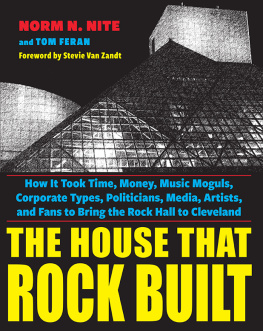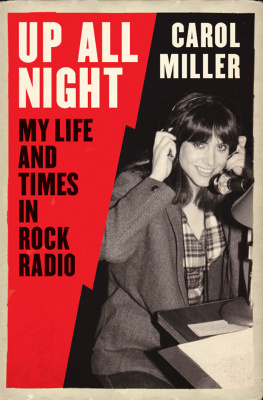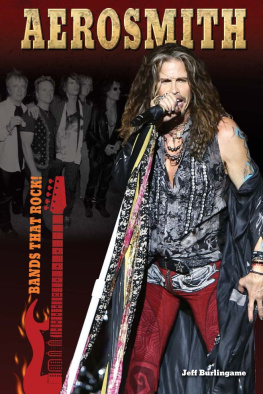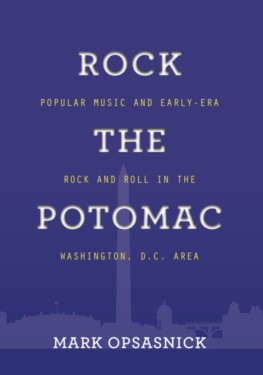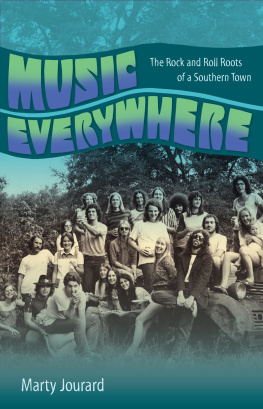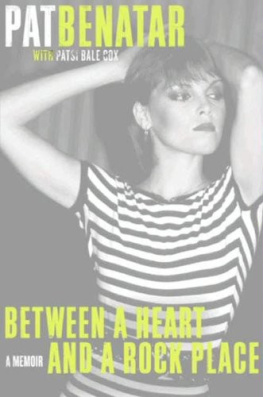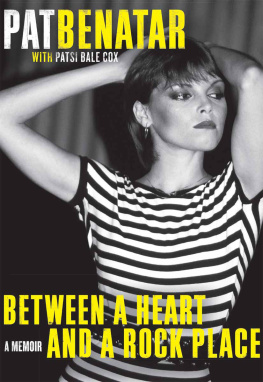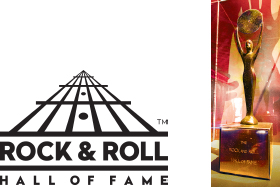Norm N. Nite - The House That Rock Built: How it Took Time, Money, Music Moguls, Corporate Types, Politicians, Media, Artists, and Fans To Bring the Rock Hall To Cleveland
Here you can read online Norm N. Nite - The House That Rock Built: How it Took Time, Money, Music Moguls, Corporate Types, Politicians, Media, Artists, and Fans To Bring the Rock Hall To Cleveland full text of the book (entire story) in english for free. Download pdf and epub, get meaning, cover and reviews about this ebook. year: 2020, publisher: The Kent State University Press, genre: Home and family. Description of the work, (preface) as well as reviews are available. Best literature library LitArk.com created for fans of good reading and offers a wide selection of genres:
Romance novel
Science fiction
Adventure
Detective
Science
History
Home and family
Prose
Art
Politics
Computer
Non-fiction
Religion
Business
Children
Humor
Choose a favorite category and find really read worthwhile books. Enjoy immersion in the world of imagination, feel the emotions of the characters or learn something new for yourself, make an fascinating discovery.
- Book:The House That Rock Built: How it Took Time, Money, Music Moguls, Corporate Types, Politicians, Media, Artists, and Fans To Bring the Rock Hall To Cleveland
- Author:
- Publisher:The Kent State University Press
- Genre:
- Year:2020
- Rating:3 / 5
- Favourites:Add to favourites
- Your mark:
The House That Rock Built: How it Took Time, Money, Music Moguls, Corporate Types, Politicians, Media, Artists, and Fans To Bring the Rock Hall To Cleveland: summary, description and annotation
We offer to read an annotation, description, summary or preface (depends on what the author of the book "The House That Rock Built: How it Took Time, Money, Music Moguls, Corporate Types, Politicians, Media, Artists, and Fans To Bring the Rock Hall To Cleveland" wrote himself). If you haven't found the necessary information about the book — write in the comments, we will try to find it.
The behind-the-scenes battle for the Rock Hall
For 25 years, the Rock and Roll Hall of Fame has defined Clevelands image as the Rock and Roll Capital of the World. But while the Rock Hall has become an iconic landmark for the city of Cleveland and for fans of rock and roll around the world, it was just one missed phone call away from never being built in Cleveland. If the prominent singer and actress Lesley Gore hadnt contacted radio personality Norm N. Nite in August 1983, the Hall of Fame would not be in Clevelandperiod.
Earlier that summer, Gore had learned that the newly formed Rock and Roll Hall of Fame Foundation was looking for a city to house their planned museum honoring the history of rock. Gore knew that a year earlier, Nite had pitched an idea for a similar museum, so she reached out to let him know that other figures in the music industry were working to turn his dream into a reality.
Nite immediately joined the projects Rules and Nominating Committee and spearheaded the campaign to bring the museum to Cleveland. At the time, the search committee was considering several other cities, including Memphis, Detroit, and New York, but Nite argued that the citys deep historical connection to rock music through Alan Freed and the Moondog Coronation Ball made Cleveland the perfect location. He began lobbying local and state politicians, fundraising with music moguls and civic leaders, and promoting the museum to the broader Cleveland public. As fans got involved, especially with their overwhelming response to a USA Today phone poll, Nites campaign to bring the Hall to Cleveland was ultimately successful.
This book, told from Nites insider perspective, draws on both first-person accounts and exclusive interviews with influential business leaders, government officials, and giants of the music industry. A detailed record of the Rock Halls inception and creation, The House That Rock Built becomes a true tribute to the people who made it happenthrough Herculean effortsand to the music it celebrates.
Norm N. Nite: author's other books
Who wrote The House That Rock Built: How it Took Time, Money, Music Moguls, Corporate Types, Politicians, Media, Artists, and Fans To Bring the Rock Hall To Cleveland? Find out the surname, the name of the author of the book and a list of all author's works by series.

